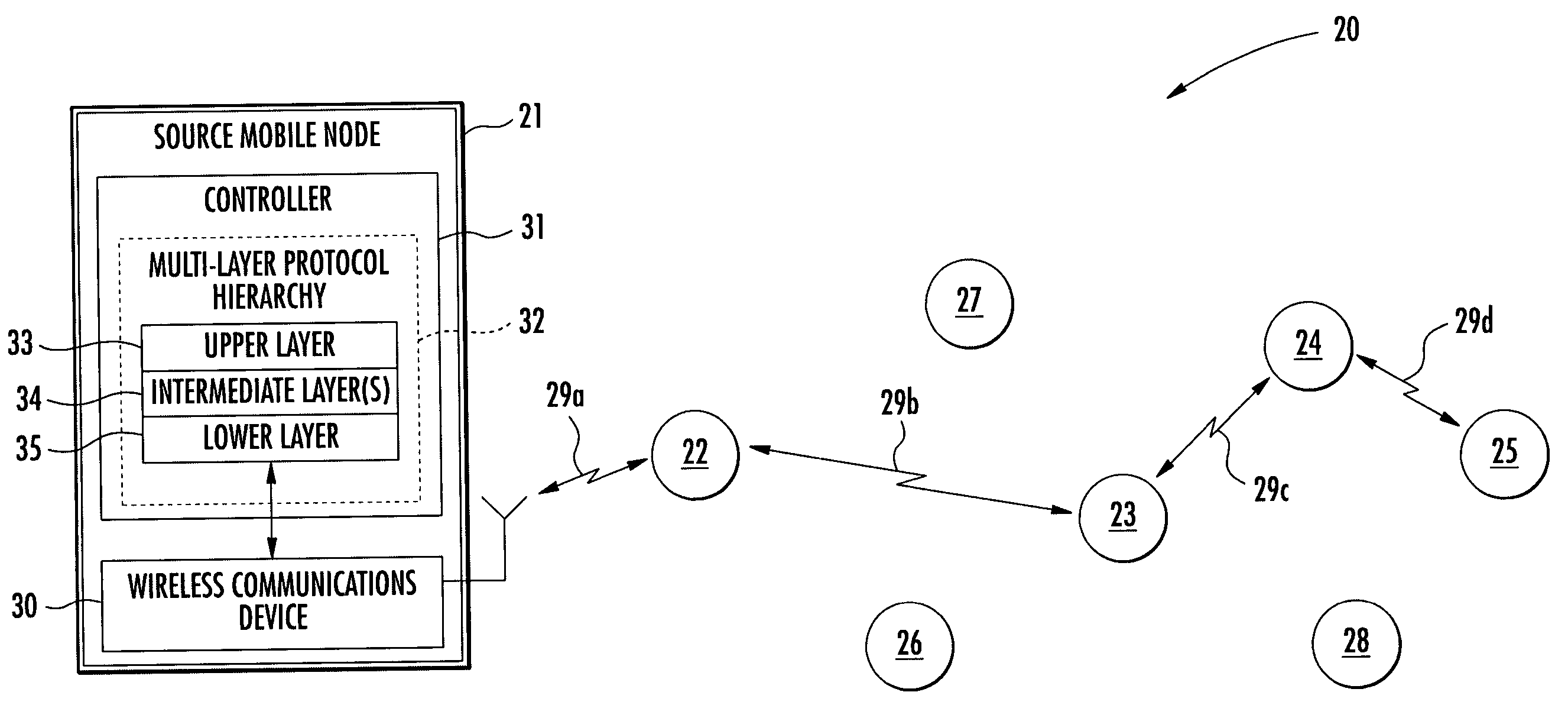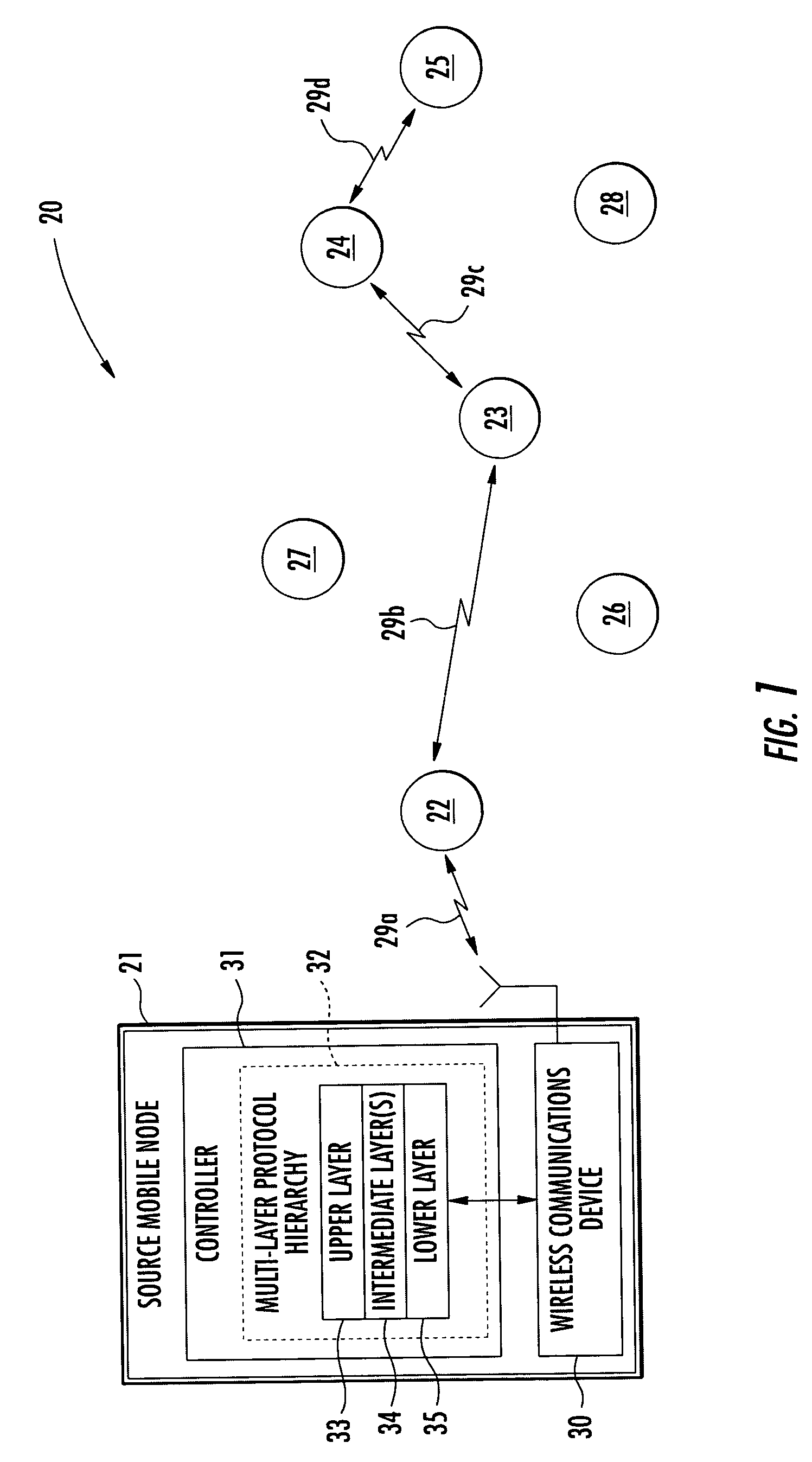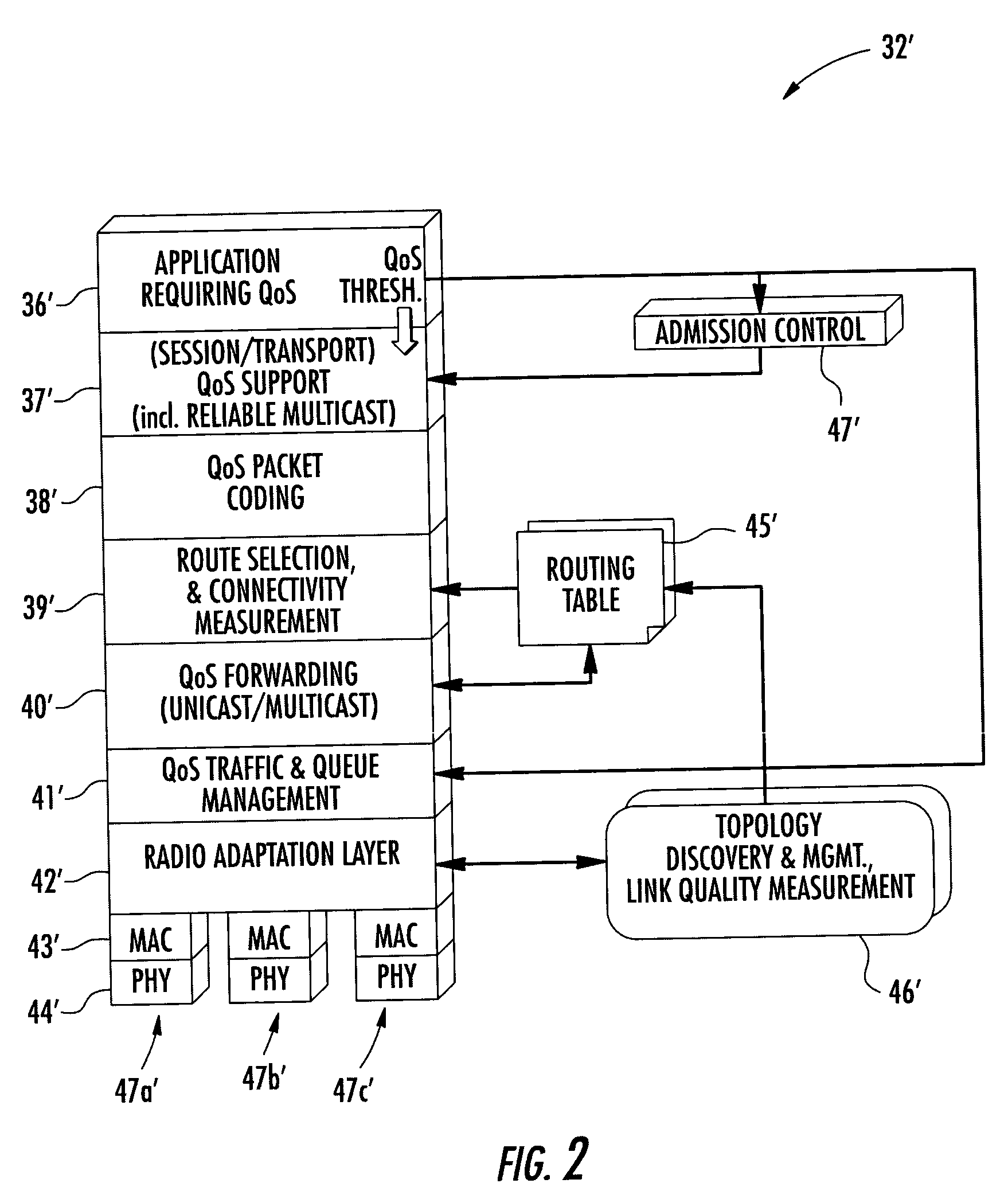Mobile ad hoc network (MANET) providing quality-of-service (QoS) based unicast and multicast features
a mobile ad hoc network and quality-of-service technology, applied in the field of communication networks, can solve the problems of limited communication and computation capabilities, limited system bandwidth, and designers' serious problems, and achieve the effect of reducing interference and increasing node connectivity
- Summary
- Abstract
- Description
- Claims
- Application Information
AI Technical Summary
Benefits of technology
Problems solved by technology
Method used
Image
Examples
Embodiment Construction
[0028] The present invention will now be described more fully hereinafter with reference to the accompanying drawings, in which preferred embodiments of the invention are shown. This invention may, however, be embodied in many different forms and should not be construed as limited to the embodiments set forth herein. Rather, these embodiments are provided so that this disclosure will be thorough and complete, and will fully convey the scope of the invention to those skilled in the art. Like numbers refer to like elements throughout, and prime and multiple prime notation are used to indicate similar elements in alternate embodiments.
[0029] Referring initially to FIG. 1, a MANET 20 in accordance with the present invention illustratively includes a plurality of mobile nodes 21-28. In the illustrated example, the mobile node 21 functions as a source node, while the mobile node 25 functions as a destination node with which the source node seeks to communicate. The nodes 21-28 may be any...
PUM
 Login to View More
Login to View More Abstract
Description
Claims
Application Information
 Login to View More
Login to View More - R&D
- Intellectual Property
- Life Sciences
- Materials
- Tech Scout
- Unparalleled Data Quality
- Higher Quality Content
- 60% Fewer Hallucinations
Browse by: Latest US Patents, China's latest patents, Technical Efficacy Thesaurus, Application Domain, Technology Topic, Popular Technical Reports.
© 2025 PatSnap. All rights reserved.Legal|Privacy policy|Modern Slavery Act Transparency Statement|Sitemap|About US| Contact US: help@patsnap.com



